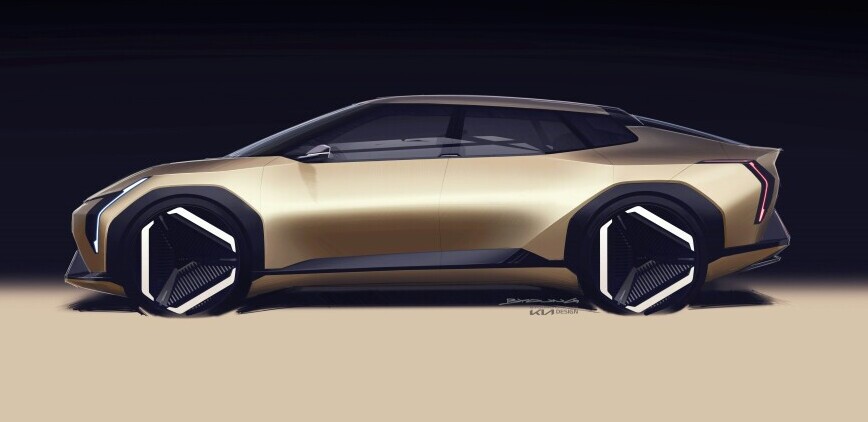Impacts Of Global Policies On The EV Market
Global policies are the unsung heroes in the electric vehicle (EV) transformation. They’re pretty much the fuel that fires up the whole system, giving it the kick it needs to really get moving. From boosting sales to reshaping the automotive landscape, policies are doing a lot of heavy lifting.
Purchase incentives are a classic example. In places like China, Europe, and the U.S., people are getting a financial nudge to go electric. You buy an EV, and you might just find yourself pocketing some extra cash or tax benefits. This helps folks justify the upfront cost, making EVs more competitive with traditional cars.
Emission standards are also playing a crucial part. By tightening these regulations, governments are telling automakers to clean up their act or risk falling behind. The European Union, in particular, has been upping the ante, nudging manufacturers to produce cleaner, greener cars.
Take a peek at the U.S. Inflation Reduction Act. It’s been a real game-changer, pushing the needle on EV sales by making them a more attractive option. It’s essentially creating a fertile ground for EVs to flourish by working well with purchase incentives.
Over in Europe, the UK ZEV mandate is making waves too. It’s contributing its share by encouraging manufacturers to roll out more electric light-duty vehicles (LDVs), nifty little machines perfect for city driving.
In 2022, this whole policy-driven push saw global spending on electric cars cruising past the $400 billion mark, a testament to how impactful these strategies are. It’s not just about getting wheels on the road; it’s about creating a sustainable future and driving the world towards cleaner energy.
Beyond Personal Vehicles: Global Policy Focus on Heavy-Duty Transportation
There’s a massive shift happening in the electric vehicle world, and it’s not just about electric cars anymore. Policies are now stretching beyond personal rides and targeting heavy-duty vehicles. Think trucks, buses, and the big workhorses that keep cities running.
This focus is all about expanding the electrification movement to areas that burn a lot more fuel. Heavy-duty vehicle policies are stepping up with things like grants and incentives to encourage transit authorities and big fleet owners to go electric. But it’s more than just buying vehicles; it’s about building the infrastructure to support these massive machines.
Dedicated charging points are crucial. Setting up spots where buses or delivery trucks can charge up quickly is all part of the game plan. This requires not just local government participation but also private sector investments. More charging stations mean a more realistic and feasible shift to electric heavy-duty transportation.
Subsidies for electric buses are making public transport greener. Cities worldwide are using these incentives to swap out old diesel vehicles for electric fleets. It’s a win for air quality and urban dwellers who get a smoother, quieter ride around town.
The EU is forging ahead with its commercial vehicle emission standards, setting an example of how policy can encourage innovation and transformation in big scale transportation. These policies push companies to rethink how they move goods and people, ultimately reducing their carbon footprint.
Strengthening the Backbone: Policies and Supply Chain Enhancements
The EV revolution relies on a rock-solid supply chain to sustain its momentum. As global policies step in to bolster these intricate networks, they’re playing a crucial role in ensuring that the EV ecosystem stays strong, versatile, and ready for action.
At the heart of these efforts is the focus on vehicle and battery manufacturing. Policies are rolling out the red carpet for manufacturers, offering incentives and frameworks that make setting up shop more appealing. This isn’t just about building vehicles; it’s about ensuring that there’s enough capacity and innovation to keep up with demand.
The supply of critical minerals, like lithium and cobalt, is a hot topic. With demand for these resources soaring, policies are diving into bolstering these supply chains. By supporting mining operations and encouraging recycling initiatives, they keep the raw materials flowing to the manufacturers who need them.

One of the key strategies is fostering international collaborations. By working together, different countries can tap into each other’s resources and expertise, creating a more interconnected and resilient supply system. This is a game-changer because it distributes the burden and benefits across the globe.
These efforts aren’t just about solving problems; they’re about creating a more sustainable and future-proof industry. A strong supply chain supports not only the manufacturing side but also the deployment and maintenance of EVs on the road, ensuring that the shift to electric is viable and robust for years to come.
Powering the Future: Enhancing Charging Infrastructure for EVs
Charging infrastructure might not have the headline-grabbing appeal of a shiny new electric vehicle, but it’s just as crucial to the EV journey. Without it, we’ll be running on empty, quite literally. Recognising this, global policies are steering significant resources into building robust networks where EVs can recharge and roll out.
Investment is flowing into the creation of charging stations across urban landscapes and rural stretches. This expansion means more convenience for drivers, ensuring that range anxiety doesn’t ruin the electric experience. These stations are popping up in shopping centers, town centres, service stations, and even at workplaces, making charging as simple as finding a parking spot.
Policies are also gearing up with incentives for the private sector. Companies that invest in charging infrastructure can receive financial nudges or subsidies. This collaboration between government efforts and business investments is accelerating the pace at which charging networks are unfurling.
Tech upgrades are another policy priority. Fast-charging technology is improving, reducing the time it takes to charge an EV up. These advancements are being driven by both policy mandates and consumer demand, leading to research in battery technology and charging techniques.
Even rural communities and underserved areas are getting attention. Policies are making sure that no area gets left behind by allocating funds and resources to build infrastructures where the charging options might be sparse, although these areas do take a little longer to set up due to routing power to the chargers in more remote locations. Everyone deserves access to a greener, more sustainable future, regardless of their zip code.
Driving Towards Efficiency: Policies Advancing Energy and Sustainable Production
Energy efficiency and sustainable production are at the core of EV policies, shaping how these vehicles impact the planet from start to finish. Policies are all about setting the bar higher, ensuring that every step in the EV life cycle leaves a smaller carbon footprint.
Regulations are tightening to push manufacturers towards greener production methods. This means using renewable energy sources in factories and implementing technologies that cut down on waste and emissions. It’s about making sure that the promise of ‘green’ reaches beyond the consumer and into the heart of production.
Renewable energy isn’t just for powering homes anymore. It’s stepping into the arena to power EV manufacturing units. Seeing factories sip from the solar or wind tap is a game-changer, aligning production with the sustainable ethos EVs represent.
Across the globe, countries are adopting innovative technologies to improve how EVs are built. This includes advancements in recycling to make better use of materials and developing methods to prolong battery life and utility.
Leading by example, certain countries are setting benchmarks in sustainable EV practices. These pioneers are embracing policies that integrate sustainability into every stage, from resource extraction to vehicle disposal. They’re showing what’s possible when environmental responsibility drives policy.
These policies aren’t just about creating cleaner cars but about setting up a sustainable system that supports these innovations for the long haul. It’s this commitment to sustainability that ensures the EV wave transforms the way we impact our planet for generations to come.



3 comments